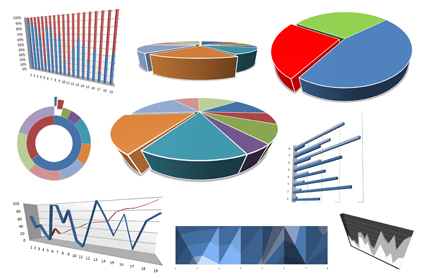Data, data, everywhere … but how do we best exploit it? There’s no doubt that one of the biggest IT revolutions of recent years is the volume of Big Data we’re able to generate: data on an unprecedented level. The challenge facing us is to harness these massive data volumes from our websites and other channels to yield deep business insights and ultimately impact the bottom line.
But the art of turning data into actionable intelligence that delivers profit remains somewhat elusive for many companies. Around 20 or so years ago the only data available on a marketing campaign might have been volume dispatched and number of inquiries. Compare that with today’s data availability, as well as the wide range of marketing opportunities and technologies we have at disposal, enabling us to deliver and measure our communications – whether email, internet, social, mobile and so on. The shift really is on a massive scale, and it presents us with a wide open playing field of opportunity.
Here are three illuminating stories that point the way forward, showing how we can exploit huge data volumes to gain deep business insights, effective response rates and ultimately more profit from websites.
Story 1: Google test tanks, yet reveals critical insights
In February 2000, Google introduced ‘A/B Testing’ – testing two variations against each other to know which performs better. The testing tanked. Yet it revealed a critical insight about the importance of page speed.
Google’s engineers wanted to know if the number of results its search engine displayed per page (10) was optimal for users. So they ran an experiment. To 0.1 per cent of the search engine’s traffic, they presented 20 results a page; another 0.1 per cent saw 25 results, and another, 30.
Pages viewed by the experimental groups loaded significantly slower than the control did, causing the relevant metrics to tank. But the insight gained was that tenths of a second could make or break user satisfaction in a precisely quantifiable way. Google was quick to learn and apply the lesson: it tweaked its response times and allowed real A/B testing to blossom. In 2011, Google ran more than 7,000 A/B tests on its search algorithm.
Story 2: Testing enables radical improvement
Online payment WePay exploited data successfully to design its entire homepage through a testing process. The end result: radical change to its website to better engage users and increase revenues. “We did it as a contest,” said WePay’s CEO Bill Clerico. “A few of our engineers built different homepages, and we just put them in rotation.”
For two months, every visitor to WePay.com was randomly assigned a homepage, and at the end the numbers made the decision. In the past, this exercise would have been impossible. The emerging design would have been completely different, perhaps even being designed by the CEO or engineers. With A/B testing, because you can test everything, your customers make the best decision for you.
Story 3: Turn your website and profitability on their heads
One company has been able to turn its website and profitability on their heads, thanks to testing and instant feedback. It has led to major changes in developing products. Trovus spent time with Tony Davis, Founder of Canadian Venture Capital firm Brightspark that invested in Radian 6 (recently sold to Salesforce for $326m). He runs a business selling online personalised jewellery called Jewlr.com.
Jewlr.com use design software to create some 30–40 designs each week, promoting them on their website. They then make only the jewellery on demand based on what people buy. Designs with no interest get thrown out and fresh designs brought in.
Jewlr.com’s Davis says it’s virtually impossible to second guess the market and the designs people will like. So developing a process to continually test and measure the product is invaluable, resulting in a highly profitable approach and a number of very successful products.
Lessons for B2B
Though these stories reflect the B2C world more than they do B2B, that doesn’t make them irrelevant. Testing isn’t yet as pervasive in the B2B world, but clearly there is more opportunity to develop the A/B testing approach.
In the B2C world, Google insiders have a derisive term to describe a decision-making system that fails to put data at its heart: HiPPO – ‘highest-paid person’s opinion’. As Google analytics expert Avinash Kaushik declares: “Most websites suck because HiPPOs create them.”
Of course, for professional services and B2B companies the website is just one element of the mix. Marketers are under significant pressure to manage multiple activities and this may not be high on the priority list. The view may be that as a website isn’t transactional, this matters less.
But lessons can be learned. We know that your website is important. Your clients and prospects engage with it and with its content. Finding the designs, the pathways and the content that resonates best with them is vital. There is a lot that the B2B world can learn from the B2C world. The more that these techniques can be applied and brought over, the more you can engage with your clients and prospects, ultimately delivering better satisfaction, relationships and profitability.






